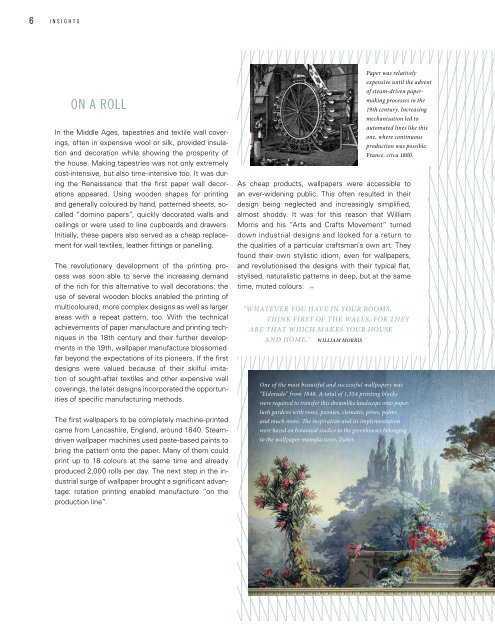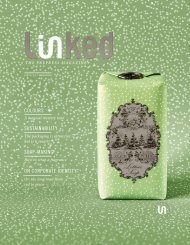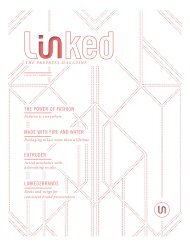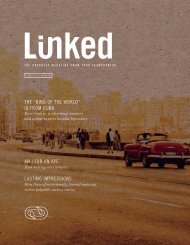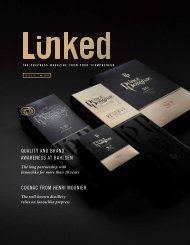Janoschka magazine_Linked_V2_2017
Create successful ePaper yourself
Turn your PDF publications into a flip-book with our unique Google optimized e-Paper software.
6<br />
i n s i g h t s<br />
On a Roll<br />
In the Middle Ages, tapestries and textile wall coverings,<br />
often in expensive wool or silk, provided insulation<br />
and decoration while showing the prosperity of<br />
the house. Making tapestries was not only extremely<br />
cost-intensive, but also time-intensive too. It was during<br />
the Renaissance that the first paper wall decorations<br />
appeared. Using wooden shapes for printing<br />
and generally coloured by hand, patterned sheets, socalled<br />
“domino papers”, quickly decorated walls and<br />
ceilings or were used to line cupboards and drawers.<br />
Initially, these papers also served as a cheap replacement<br />
for wall textiles, leather fittings or panelling.<br />
The revolutionary development of the printing process<br />
was soon able to serve the increasing demand<br />
of the rich for this alternative to wall decorations: the<br />
use of several wooden blocks enabled the printing of<br />
multicoloured, more complex designs as well as larger<br />
areas with a repeat pattern, too. With the technical<br />
achievements of paper manufacture and printing techniques<br />
in the 18th century and their further developments<br />
in the 19th, wallpaper manufacture blossomed<br />
far beyond the expectations of its pioneers. If the first<br />
designs were valued because of their skilful imitation<br />
of sought-after textiles and other expensive wall<br />
coverings, the later designs incorporated the opportunities<br />
of specific manufacturing methods.<br />
The first wallpapers to be completely machine-printed<br />
came from Lancashire, England, around 1840. Steamdriven<br />
wallpaper machines used paste-based paints to<br />
bring the pattern onto the paper. Many of them could<br />
print up to 18 colours at the same time and already<br />
produced 2,000 rolls per day. The next step in the industrial<br />
surge of wallpaper brought a significant advantage:<br />
rotation printing enabled manufacture “on the<br />
production line”.<br />
Paper was relatively<br />
expensive until the advent<br />
of steam-driven papermaking<br />
processes in the<br />
19th century. Increasing<br />
mechanisation led to<br />
automated lines like this<br />
one, where continuous<br />
production was possible.<br />
France, circa 1880.<br />
As cheap products, wallpapers were accessible to<br />
an ever-widening public. This often resulted in their<br />
design being neglected and increasingly simplified,<br />
almost shoddy. It was for this reason that William<br />
Morris and his “Arts and Crafts Movement” turned<br />
down industrial designs and looked for a return to<br />
the qualities of a particular craftsman’s own art. They<br />
found their own stylistic idiom, even for wallpapers,<br />
and revolutionised the designs with their typical flat,<br />
stylised, naturalistic patterns in deep, but at the same<br />
time, muted colours.<br />
"Whatever you have in your rooms,<br />
think first of the walls, for they<br />
are that which makes your house<br />
and home." William Morris<br />
One of the most beautiful and successful wallpapers was<br />
“Eldorado” from 1848. A total of 1,554 printing blocks<br />
were required to transfer this dreamlike landscape onto paper:<br />
lush gardens with roses, peonies, clematis, pines, palms<br />
and much more. The inspiration and its implementation<br />
were based on botanical studies in the greenhouses belonging<br />
to the wallpaper manufacturer, Zuber.


